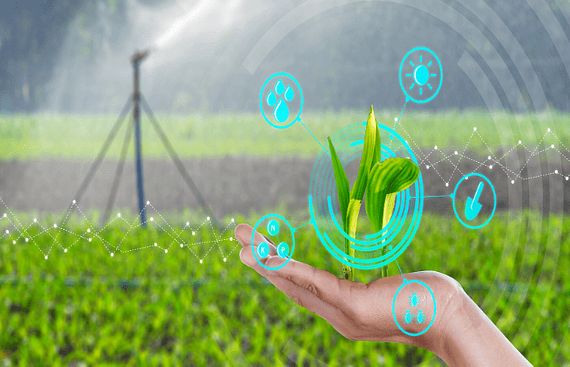India Tech Stack for the Agri Economy

Agriculture has been the backbone of the Indian economy. In 2016 the sector had employed over 50 percent of the Indian workforce and contributed about 17-18 percent of India’s GDP. However, past four years, in 2020 agriculture and other similar sectors such as forestry, fisheries, animal husbandry and more have together have accounted for close to 15.4 percent of the country’s GDP employing 41.49 percent workforce. Also, India’s agricultural commodities exports were estimated to be $38 billion worth in 2013, however, the figure has dropped to $3.50 billion in March - June 2020. The numbers clearly reveal that the agricultural contribution towards to country has been gradually declining with India’s broad-based economic growth. Yet, agriculture is being the broadest economic sector and plays a crucial role in fabricating the country’s overall socio-economic state.
Taking this state into consideration, the government is keen on building agristack- a digital agristack. This is a hi-tech general farmers’ database that would offer the government and agribusinesses exceptional insights into the rural economy. Farming’s deteriorating condition would indeed hinder the country’s overall economy. But, how would this digital farming service aid the agriculture sector.
Agristack is a tech stack that would offer collected granular information to the farmer on the crop to plant, place to sell the yield and other related market information, and linkages to formal credit arrangements. Alongside, each farmer would also be given a unique ID that would be associated with their Aadhaar card. It would aid in providing other information such as land ownership, yield grown, soil health, and benefits of government schemes.
Danger Hints
The country's rural economy has been linked to land, whose ownership is often intensely disputed. Generally, farm activists and digital rights groups have raised voice over the imminent big data project.
They have hinted that linking land ownership data with Aadhaar may result in roadblock as the process of digitizing land records is still in progress and India is reputed for where land disputes account for over 60 percent of all civil litigation. Alongside, the critics claim that depending on the technology may end in welfare programmes flaws. However, certainly, there are sure spin-offs as well. Over the past year, when the farm ministry compared enrolment in the PM Kisan direct cash assistance programme with that of the Kisan Credit Card (KCC), it revealed that about 25 million PM Kisan beneficiaries did not possess KCCs.
Tech indulgence such as Artificial intelligence (AI) and machine learning (ML) from large datasets would not just support farm management, but would also aid in the development and planning of new crop protection products. Worldwide, 125 million acres of farmland is actively maintained by farmers who use the Syngenta group’s digital services. Not all are in the broader tech ecosystem has a favourable outlook on the impending transformation.
If real-time data on a specific crop planting can be used to warn farmers of an impending surplus or shortage, with a warning to slash or raise area under the crop. However if the same data end up individually inAgriculture and setting up an Agri Data Exchange for fast and purpose-driven exchange of data the hands of a set of large traders, it may help them manipulate markets. Farmers’ groups should proactively suggest the government use-case scenarios that will profit them.
Furthermore, random data on the AgriStack platform isn’t sufficient. The value of aggregate data is many occasions more than the individual data of a user that is why cab aggregators hold tremendous power over drivers and riders on their platforms.
The AgriStack project would profit large corporations by giving them access to the data of millions of growers. Such vested interests can suddenly sell farmers everything from chemicals to credit and pare their own current marketing and human resource costs.
Power & After Effects
According to the digital ecosystem (IDEA) consultation paper being released early in June by the agriculture ministry recommends proposing the AgriStack project on a mission mode by creating a National Mission for Digital farming and developing an Agri Data Exchange for rapid and purpose-driven exchange of information.
But it is not certain to may create chaos among states is a suggestion to link a share of central assistance in agriculture to progress achieved in fulfilling IDEA. Added potential conflict point could be opponent from farm groups on linking Aadhaar with land ownership data. If the farm laws passed by Parliament (in September 2020) could be exaggerated by farmers as a request to take away their property, sharing land ownership details with private entities could be a bigger flashpoint.
The scale of the AgriStack that India is endeavouring to gather nearly 150 million landholdings on a single platform and has no parallels worldwide. Yet, it has been restricted to agriculture and technology titans developing their own data platforms to service farmers.
But the global experience reveals. According to a 2017 survey of farmers conducted by the Australian government noted that farmers presented a general willingness to share data, but they were also worried over aggregated data in relation to secrecy, financial advantage taken by other businesses, and the power for it to be used to control the markets, such as yield prices and land value.
The digital technologies could be used to work for farmworkers, farmers, consumers, and the environment say a January 2021 research paper by the international non-profit GRAIN titled Digital Control. But the technology does not design in a sac; it demands finance and energy both of which are remarkably intense in the tech sector.
